How to Prepare Beef Intestines for Bbq
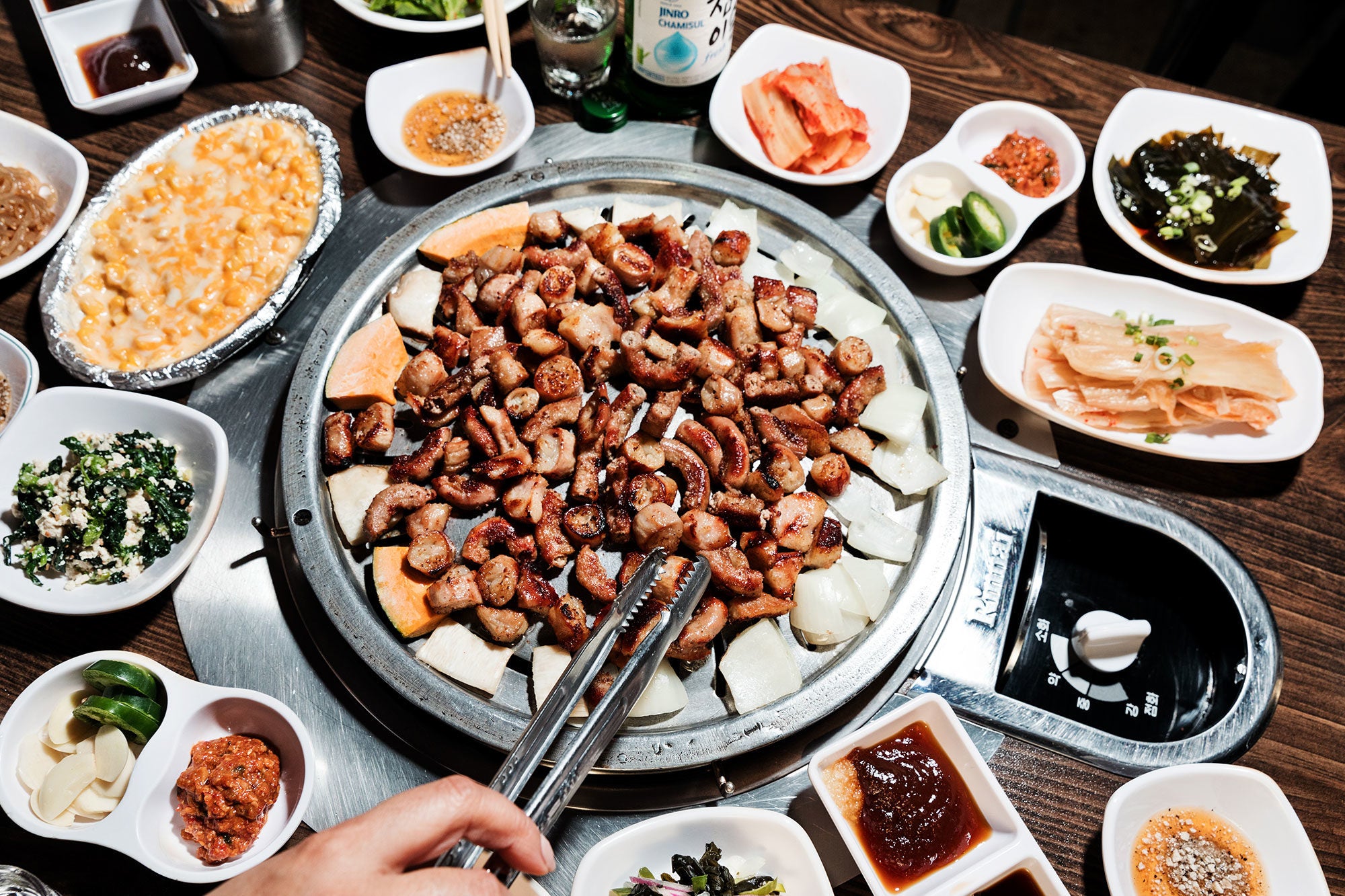
Gopchang went viral in Korea, and it's coming for America.
The scene opens on Ahn Hye-jin (stage proper noun: Hwasa), a South Korean pop star, clad in denim overalls, sitting at an empty restaurant patio somewhere in Seoul and presiding over a tableau of gopchang, or grilled beef intestines sizzling on a platter. She enthusiastically snaps upward pocket-size bites with her metallic chopsticks, dipping them into diverse sauces, exhaling with glee. She whips her long pilus back and forth equally she eats. You can hear the snap and chew of the meat, breaking through the potato-scrap-crispy exterior to the rich, buttery interior. It's incredibly satisfying to scout.
This 2018 mukbang—a format of audiovisual broadcasting of eating popular in Republic of korea—was so widely seen (the YouTube video has close to v one thousand thousand views) that information technology prompted a nationwide shortage of organ meats.
In South Korea, gopchang is cultishly beloved. Information technology ticks all the boxes: fatty, chewy, snacky, and, most important, a perfect pairing for soju—the country'southward national beverage. At that place are clusters of gopchang restaurants in Seoul, and well over 5,000 Instagram posts (mostly videos) tagged with #gopchang. Gopchang is just starting to gain a following in the Us—generally among Asian diners—merely it remains to exist seen whether grilled intestines tin can ever achieve such a cult condition here.
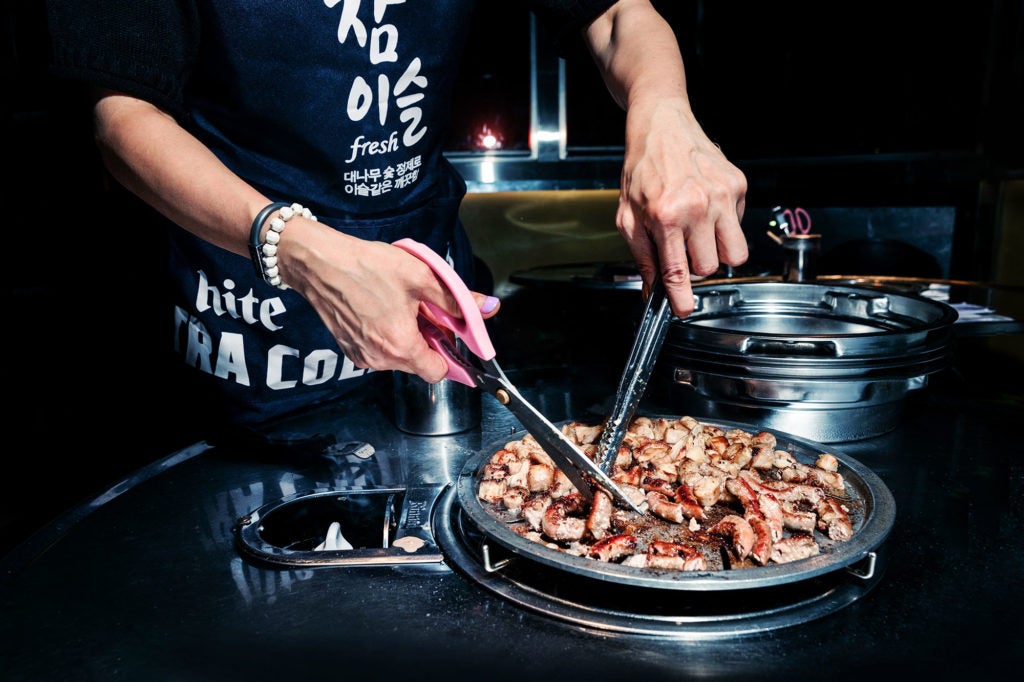
Byul Gobchang in Los Angeles
Consuming gopchang allegedly dates back to somewhere in the Joseon Dynasty, which lasted from the fourteenth to nineteenth centuries—it was a cheap cut of meat said to have valuable nutritional backdrop. These days, it's known as a staple drinking food, called "anju" in Korean. It's commonly served grilled—sometimes tableside, like with traditional Korean-style grilling—often with a chive or scallion salad on the side, and small bowls of table salt and sesame oil for dipping. It'south also served in a rich and sometimes fiery stew called gopchang-jeongol.
A lot of people consider intestines to be an inferior alternative to some presumably more delicious role of the animal, says Matthew Kang, the editor of Eater Los Angeles. But to him, they're not an alternative. He craves them.
"What do y'all want when you are drinking?" he says. "Something that is fat and salty and enables you to go on drinking more than. Gopchang has all those qualities. How is it different than buffalo wings or a burger?"
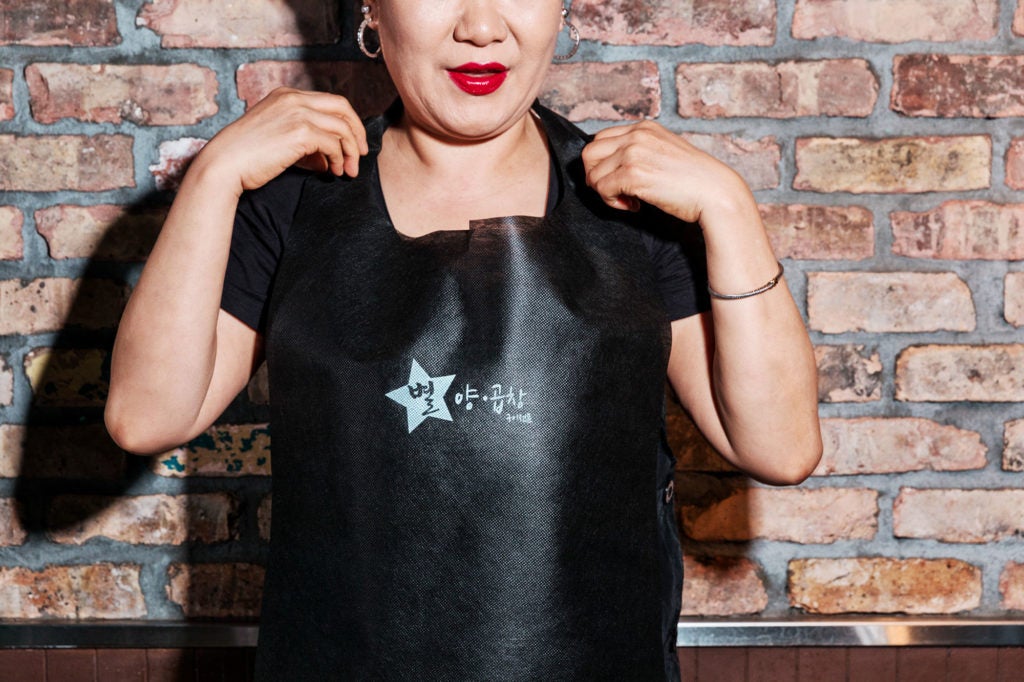
To those who love it, gopchang is the ideal marriage of texture and unsullied, rich flavor—"clean, pure, buttery fat," every bit James Park, who besides works at Eater and hosts a YouTube cooking show called "Cooking My Feelings," puts it.
Deuki Hong, the coauthor of the cookbook Koreatown, compares the consistency to chewy rice cakes chosen duk, with an "elastic-y" within. "In Asian cuisines, people seek that out," he says. Every restaurant has a proprietary seasoning or marinade for its gopchang, he adds, which brings however another level of flavor.
Gopchang is also part of Korean pop civilization. Youngmi Mayer, a New York comedian, says that during function of her childhood in Korea, she associated gopchang with her uncles. "It seemed more like an former-man drinking food," she says of the scenes that played out in which her family members enjoyed gopchang alongside their libations at restaurants and at home. But she's seen the dish grab on with a younger crowd in Korea, thanks to all the mukbang videos—there are so many more than just Hwasa'southward.
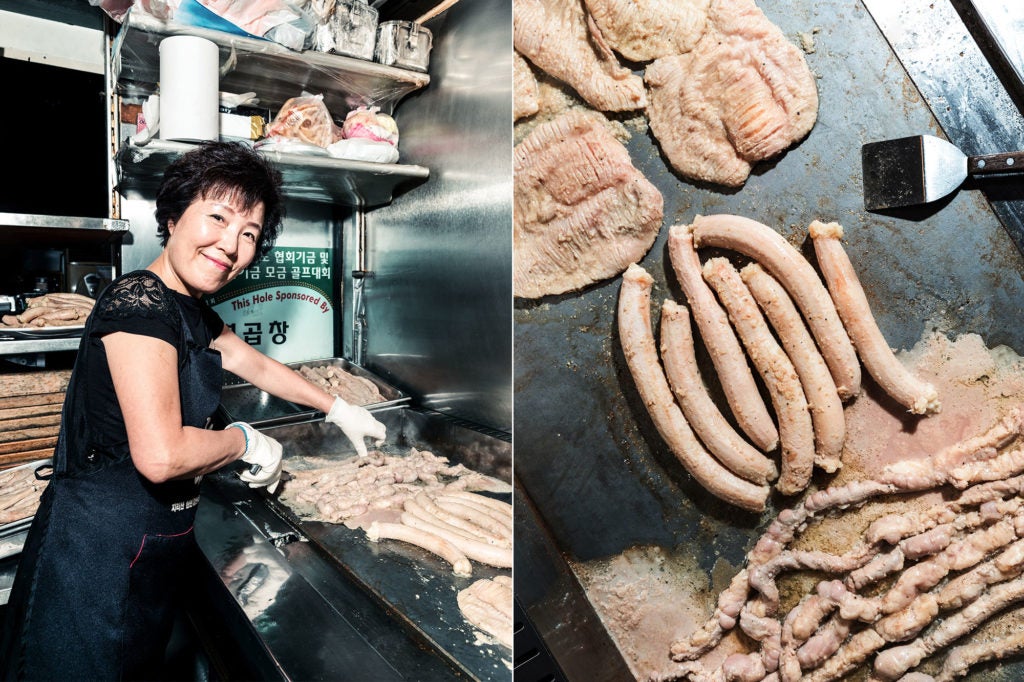
The kitchen at Byul Gobchang in Los Angeles
The dramatic presentation and unique texture make gopchang a perfect mukbang candidate. In one video, a Korean YouTuber who goes by "G-NI" starts by grilling the intestines herself, letting them develop a deep, golden-brown sheen, and then cutting them into bite-size nibs with scissors and devouring the entire platter, piece by piece, while intermittently taking sips of soju. Hong says that in Korean dramas, characters are often eating gopchang and drinking soju—considering it's such a classic drinking food, it's become an archetypal setting for fictional social situations.
In the United States, a few restaurants dedicated to gopchang have popped upward in cities with large Korean-American populations—at that place's Gopchang Story BBQ in New York, and Ahgassi Gopchang and Byul Gobchang in Los Angeles. At some more general Korean charcoal-broil places, gopchang is also available, even if it's not on the menu, Park says—you lot but have to ask.
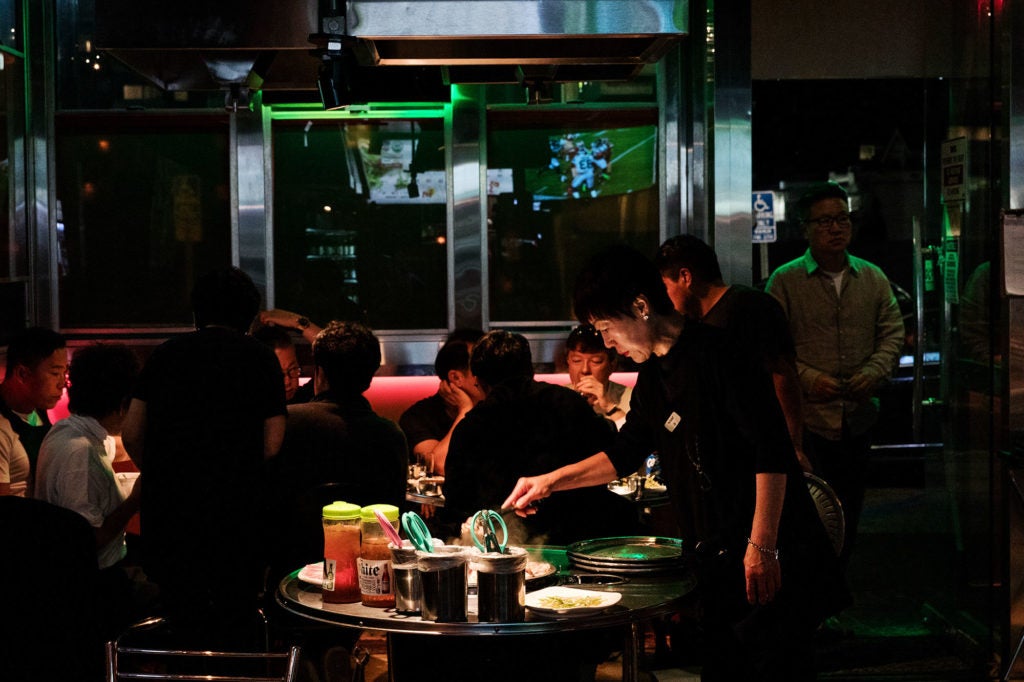
A hostess at Gopchang Story BBQ said the clientele is "generally Asian," but not all Korean, and she rarely sees non-Asians dining there. Even with such a segmented audition, she said, there's a ane- to two-60 minutes await nigh nights. The identify is always packed.
When Hong opened the New York branch of the Korean charcoal-broil spot Kang Ho Dong Baekjeong in 2014, the company wouldn't permit him to put gopchang on the menu—but he kept some in the back and would serve it to whoever asked. "If I were creating the card, I totally would accept put it on at that place," he says. "I fully believe it would have washed actually well."
"It is like offal cooking in the South," he adds. People's passion for it "doesn't go wide, only information technology goes deep. The people who honey information technology actually love it."
But Kang is more doubtful of gopchang'southward power to hitting the American mainstream. He and Mayer signal out that when they get out for gopchang here in the United States, their fellow diners are nearly exclusively Asian. And until restaurants put gopchang on their menus instead of just offering information technology as a undercover item, people won't know to fifty-fifty attempt it.
"I don't think intestines volition ever exist all that popular," he says, adding with a chuckle, "fifty-fifty if all of BTS promotes it."
angashatevesserom.blogspot.com
Source: https://tastecooking.com/cult-grilled-guts/